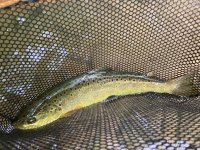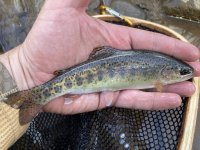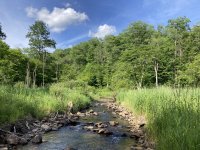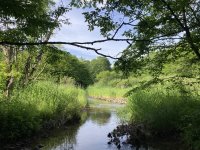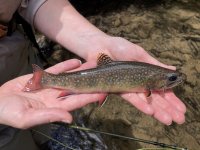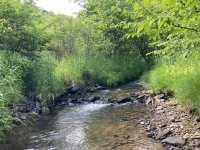The bar is low for a Class A RT designation in comparison to ST, mixed ST/BT, and BT. For Class A RT the biomass of trout less than 150 mm (5.9 in) has to be 2.0 kg/ha (1.78 lbs/ac).
Pcray, thanks for the update. We may be speaking about the same Schuylkill Co stream where the evidence of RT reproduction was in the stocked section (Section 02). The GRT reproduction occurred in Section 01. I never found wild RT in the stocked section of its formerly stocked trib though, which at least sometimes suffered from warm water temps within its stocked portion (Section 02) due apparently to multiple abruptly contributing factors, but supported a good wild trout population above.
Regarding the more recent wild RT catches, it could be that the stream is privately stocked in a posted segment. That would potentially provide an adult source for reproduction.
Pcray, thanks for the update. We may be speaking about the same Schuylkill Co stream where the evidence of RT reproduction was in the stocked section (Section 02). The GRT reproduction occurred in Section 01. I never found wild RT in the stocked section of its formerly stocked trib though, which at least sometimes suffered from warm water temps within its stocked portion (Section 02) due apparently to multiple abruptly contributing factors, but supported a good wild trout population above.
Regarding the more recent wild RT catches, it could be that the stream is privately stocked in a posted segment. That would potentially provide an adult source for reproduction.
Last edited:


